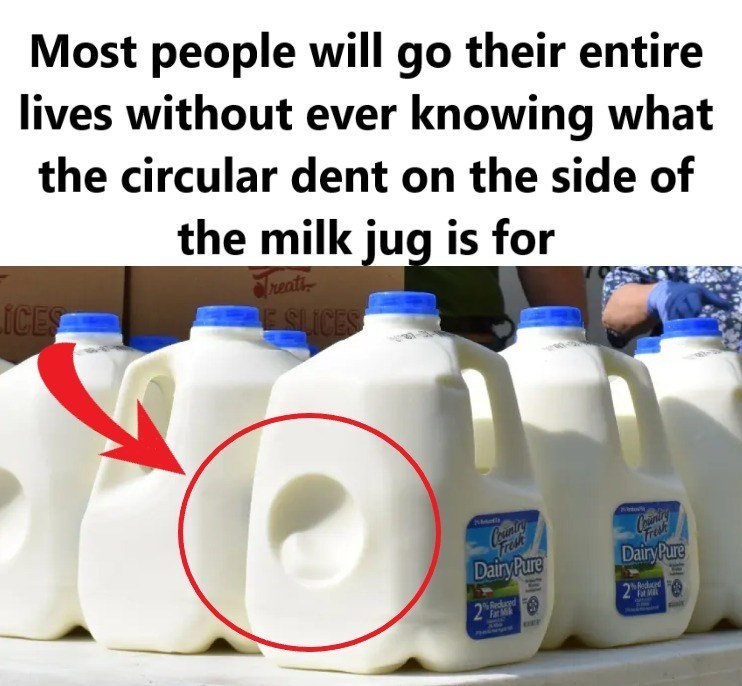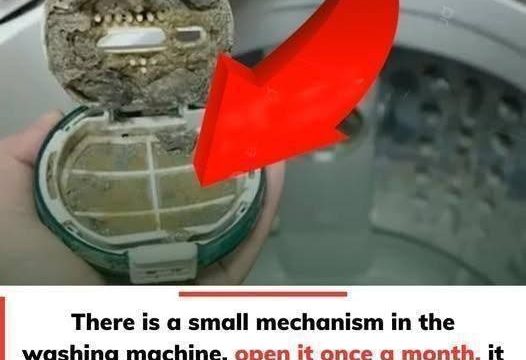If you’ve ever glanced at a plastic milk jug and wondered about that odd little circular dent on the side or bottom, you’re not alone. It’s one of those things we see so often, we stop questioning it. At first glance, it might look like a design flaw or a byproduct of the plastic molding process—just an insignificant detail. But that tiny indentation is anything but random. In fact, it’s a quiet masterpiece of engineering that makes your milk jug safer, more durable, and more environmentally friendly.
Let’s break down the brilliance behind this hidden feature.

What Is the Dent, Really?
The feature in question is often referred to as a “flexible panel” or “expansion panel.” It’s the small, circular or rectangular dent you’ll usually find on one side or on the bottom of a standard plastic milk jug. It may not look like much, but it serves a vital purpose.
Temperature Control and Pressure Management
Milk is a temperature-sensitive product. It must be stored, transported, and sold under cold conditions, typically around 35°F to 40°F. Now imagine what happens when milk containers are exposed to slight variations in temperature—especially during transport or storage. As the milk warms up or cools down, the air inside the jug expands or contracts. Without a flexible surface, these fluctuations could cause the container to bulge, warp, or even crack.
That’s where the dent comes in. It works like a flexible diaphragm that can bow inward or outward to accommodate pressure changes. Instead of the entire jug becoming distorted or weakened, the pressure is absorbed and balanced through this recessed panel. This clever design helps maintain the jug’s shape and structural integrity without needing extra material or weight.
Built-In Shock Absorber
Ever dropped a milk jug and held your breath hoping it wouldn’t burst open? Here’s another secret—the dent also functions as a shock absorber. When a jug hits the floor, that indented area compresses slightly, reducing the force of impact on the rest of the container. It’s a simple but smart way to prevent spills, breakage, and wasted milk.
Think of it like a mini airbag for your dairy products—absorbing just enough energy to keep everything intact.
Cost and Material Efficiency
In today’s eco-conscious world, reducing plastic waste is a priority. By incorporating this dent into the jug design, manufacturers can make the container more durable without adding more plastic. The flex panel allows for a thinner wall structure that still performs reliably under pressure, drop impact, and everyday use.
This means less plastic per jug, lower production costs, and less environmental waste. It’s a win-win for producers and consumers alike.
Stackability and Shelf Space
Interestingly, the dent also plays a small role in how jugs are stacked and stored. While it’s not the primary reason for its existence, the recessed panel can help improve how the jug aligns with others in storage or on store shelves. By slightly altering the jug’s structural rigidity, the indentation helps maintain form and reduces the risk of collapsing under weight—especially when multiple jugs are stacked.
Why Don’t All Containers Have One?
If this design is so effective, why don’t all liquid containers feature it? The answer lies in the unique demands of milk packaging. Unlike soda or juice, milk isn’t carbonated, so pressure from gas buildup isn’t a concern. However, milk is perishable and temperature-sensitive, and the demand for larger gallon-sized containers means they’re more susceptible to drops and impacts.
Also, milk jugs are typically handled more frequently than other drink containers—loaded into carts, placed in fridges, passed between hands. That makes a design like this especially valuable.
Final Thoughts
That unassuming dent on the side or bottom of your milk jug isn’t just there for show. It’s a functional part of the design, silently doing its job to protect your milk, keep the jug intact, and reduce environmental impact. The next time you reach for a gallon of milk, take a moment to appreciate the hidden genius of that little indentation. It’s a quiet reminder that sometimes, the smallest features make the biggest difference.





